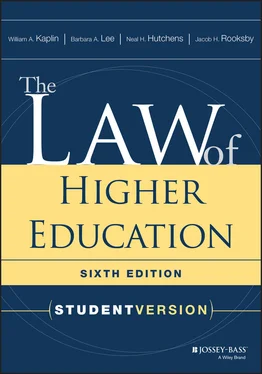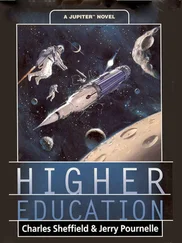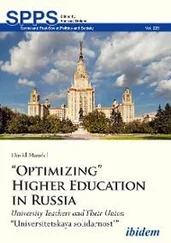Every person who, under color of any statute, ordinance, regulation, custom, or usage, of any State or Territory or the District of Columbia, subjects, or causes to be subjected, any citizen of the United States or other person within the jurisdiction thereof to the deprivation of any rights, privileges, or immunities secured by the Constitution and laws, shall be liable to the party injured in an action at law, suit in equity, or other proper proceeding for redress.
Section 1983's coverage is limited in two major ways. First, it imposes liability only for actions carried out “under color of” state law, custom, or usage. Under this language the statute applies only to actions attributable to the state, in much the same way that, under the state action doctrine (see Section 1.5.2of this book), the U.S. Constitution applies only to actions attributable to the state. While public institutions clearly meet this statutory test, private postsecondary institutions cannot be subjected to Section 1983 liability unless the action complained of was so connected with the state that it can be said to have been done under color of state law, custom, or usage.
Second, Section 1983 imposes liability only on a “person”—a term not defined in the statute. Thus, Section 1983's application to postsecondary education also depends on whether the particular institution or system being sued is considered to be a person, as the courts construe that term. Although private institutions would usually meet this test because they are corporations, which are considered to be legal persons under state law, most private institutions would be excluded from Section 1983 anyway under the “color of law” test. Thus, the crucial coverage issue under Section 1983 is one that primarily concerns public institutions: whether a public postsecondary institution is a person for purposes of Section 1983 and thus subject to civil rights liability under that statute.
A related issue, which also helps shape a public institution's liability for violations of federal constitutional rights, is the extent to which Article III and the Eleventh Amendment of the U.S. Constitution immunize public institutions from suit. While the “person” issue is a matter of statutory interpretation, the immunity issue is a matter of constitutional interpretation. In general, if a lawsuit is against the state itself or against a state official or employee sued in his or her “official capacity,” and the plaintiff seeks money damages that would come from the state treasury, 8 Eleventh Amendment immunity from federal court suit will apply. As discussed below, in Section 1983 litigation, the immunity issue usually parallels the person issue, and the courts have used Eleventh Amendment immunity law as a backdrop against which to fashion and apply a definition of “person” under Section 1983.
In a series of cases beginning in 1978, the U.S. Supreme Court dramatically expanded the potential Section 1983 liability of various government entities. As a result of these cases, it became clear that any political subdivision of a state may be sued under this statute; that such political subdivisions may not assert a qualified immunityfrom liability based on the reasonableness or good faith of their actions; that the officers and employees of political subdivisions, as well as officers and employees of state agencies, may sometimes be sued under Section 1983; and that Section 1983 plaintiffs may not be required to resort to state administrative forums before seeking redress in court.
The first, and key, case in this series is the U.S. Supreme Court's decision in Monell v. Department of Social Services of the City of New York , 436 U.S. 658 (1978). Overruling prior precedents that had held the contrary, the Court decided that local government units, such as school boards and municipal corporations, are “persons” under Section 1983 and thus subject to liability for violating constitutional rights protected by that statute. Since the definition of “person” is central to Section 1983's applicability, the question is whether the Court's definition in Monell is broad enough to encompass postsecondary institutions: Are some public postsecondary institutions sufficiently like local government units that they will be considered “persons” subject to Section 1983 liability?
The answer depends not only on a close analysis of Monell but also on an analysis of the particular institution's organization and structure under state law. Locally based institutions, such as community colleges established as an arm of the county or as a community college district, are the most likely candidates for “person” status. At the other end of the spectrum, state universities established and operated by the state itself are apparently the least likely candidates. This distinction between local entities and state entities is appropriate because the Eleventh Amendment immunizes the states, but not local governments, from federal court suits on federal constitutional claims. Consequently, the Court in Monell limited its “person” definition “to local government units which are not considered part of the state for Eleventh Amendment purposes.” And in a subsequent case, Quern v. Jordan , 440 U.S. 332 (1979), the Court emphasized this limitation in Monell and asserted that neither the language nor the history of Section 1983 evidences any congressional intention to abrogate the states' Eleventh Amendment immunity (440 U.S. at 341–45).
The clear implication, reading Monell and Quern together, is that local governments—such as school boards, cities, and counties—are persons suable under Section 1983 and are not immune from suit under the Eleventh Amendment, whereas state governments and state agencies controlled by the state are not persons under Section 1983 and are immune under the Eleventh Amendment. The issue in any particular case, then, as phrased by the Court in another case decided the same day as Quern , is whether the entity in question “is to be regarded as a political subdivision” of the state (and thus not immune) or as “an arm of the state subject to its control” (and thus immune) ( Lake County Estates v. Tahoe Regional Planning Agency , 440 U.S. 391, 401–2 (1979)). See also Borrell v. Bloomsburg University , 63 F. Supp. 3d 418 (M.D. Pa. 2014) (holding that a health care services provider that operated a joint nurse anesthesia program with a university acted under color of state law, as did the program's director, in terminating the plaintiff from the program for refusing to submit to a drug test).
3.4.2 Eleventh Amendment immunity.The case law in Section 3.1.1above adds clarity to what had been the confusing and uncertain status of postsecondary institutions under Section 1983 and the Eleventh Amendment. But courts continued to have difficulty determining whether to place particular institutions on the person (not immune) or nonperson (immune) side of the line when determining liability. Nevertheless, various courts have affirmed the proposition that the Eleventh Amendment and Section 1983 shield most state universities from damages liability in federal constitutional rights cases.
The courts have applied a variety of factors in resolving Eleventh Amendment sovereign immunity issues. In Kashani v. Purdue University , 813 F.2d 843 (7th Cir. 1987), for example, in determining whether Purdue University was entitled to Eleventh Amendment immunity, the court placed primary importance on the “extent of the entity's financial autonomy from the state.” The relevant considerations were “the extent of state funding, the state's oversight and control of the university's fiscal affairs, the university's ability independently to raise funds, whether the state taxes the university, and whether a judgment against the university would result in the state increasing its appropriations to the university.” Applying these considerations, the court dismissed the plaintiff's Section 1983 claim, concluding that Purdue was entitled to immunity because it “is dependent upon and functionally integrated with the state treasury.” The court also suggested that, although the states have structured their educational systems in many ways and courts review each case on its facts, “it would be an unusual state university that would not receive immunity” (813 F.2d at 845). The court did reaffirm, however, that under the doctrine of Ex parte Young , 209 U.S. 123 (1908), the Eleventh Amendment does not bar claims against university officers in their official capacities for the injunctive relief of reinstatement.
Читать дальше












